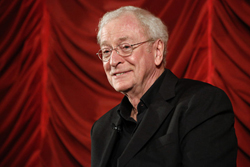
Is your audience hearing what you are attempting to communicate? If not, perhaps this is because your delivery is distracting from your message. After all, it is not only what you say – it is how you say it.
As a speech coach I am frequently asked, “I have my presentation together. Can you just coach me on the delivery?” To which I usually reply, “Why would you want to perfect a badly-structured and poorly-scripted presentation?” We always start with the presentation structure and good word choices.
Once you have your sales presentation or speech together – the structure, the stories, and the PowerPoint – then you can internalize your new Frippy way of presenting and make it second nature. When you deliver your talk, you want to be able to focus on your audience, not on your performance.
Build rehearsal into your everyday life. You will never be able to mark out your schedule to rehearse as much as you need, so make it a part of your routine:
- Recite your presentation as you walk around your office.
- Record your presentation and listen to it on your iPod.
- Talk to yourself as you are driving into work.
- Rehearse on a treadmill, which engages your left and right brain and can help you see your presentation structurally and creatively.
- Rehearse with safe people. These are people who are on your side and have your best interests at heart. If you are lucky, you are improving your sales presentations with others in a team effort.
Decide your movement strategy. Some presenters like to move, while others stand still. There is a big difference, however, between movement and nervous energy. Have you noticed some presenters do what looks like a little dance in the front of the room? Or put their weight on one leg and then the other? Do not distract from your own message with unnecessary movement.
At the beginning, it’s easiest to stand still. I also recommend standing still when you are telling a story or delivering your key benefits as a way to emphasize your points. How you stand represents the stability of your ideas and your company; a proper stance adds to your authority and raises your comfort level on the platform.
If you have an accent, remaining stationary helps your audience get used to the sound of your voice. (This may not make sense until you try it, but it works!) If you move around while your audience members are getting accustomed to the sound of your voice, they often believe that they can’t hear you.
Understand these three ways to move. If you study exceptional speakers, you’ll notice that they’ll employ three types of movement:
- On purpose. When you are moving and it is very obvious to the audience that you intended to move.
- On transition. You move between one thought and the next. One of my client’s transitional lines was “Fast forward seven years.” That was when he would move from one talking point to the other. If you have three or four talking points, feel free to move between each one. And while you are moving, you can use the phrase “And the second strategy is…” and “And the third strategy is…” etc.
- On a movement-specific line. You move to act out your words, such as “As I walked into your corporate office…”

(Photo Courtesy of Manfred Werner / Tsui)
The eyes have it. When you look around the table, use “piece-of-the-pie” eye contact. Deliver your opening line to one person. Most likely it will be one of the most important people in the room. Then look at each person for a thought, an idea, or a phrase. Don’t scan. Communicate your interest and confidence by looking at each of them for at least a few seconds.
The Oscar-winning actor Michael Caine said, “Rehearsal is the work; performance is the relaxation.” Anytime you see a natural salesperson or a great speaker, chances are that they are so well rehearsed that they look natural. Follow these tips, and you will get there as well!
![]() Sign up for your complimentary trial and discover how FrippVT can transform you and your team. FrippVT delivers high-caliber comprehensive presentation and sales presentations skills training with built in accountability: http://frippvt.com
Sign up for your complimentary trial and discover how FrippVT can transform you and your team. FrippVT delivers high-caliber comprehensive presentation and sales presentations skills training with built in accountability: http://frippvt.com
Imagine a training program that gives you 24/7 access to one of the most in-demand executive speech coaches and sales presentation experts. FrippVT is designed to be immediately engaging and makes it fun to learn. If you are a novice presenter or a seasoned professional, you will find the content both practical and relevant.
“I am an experienced speaker and successful consultant and highly recommend FrippVT to everyone who speaks in public or has to. It just doesn’t make sense for any professional to be without 24/7 access to the wisdom and experience of the master of professional that Patricia Fripp is. FrippVT is a must-have resource for all professionals.” – Pat Lynch, President, Business Alignment Strategies
Sign up for your complimentary trial: http://frippvt.com
Executive Speech Coach and Hall of Fame Keynote Speaker, Patricia Fripp works with individuals and companies who realize that powerful, persuasive presentation skills give them a competitive edge.
